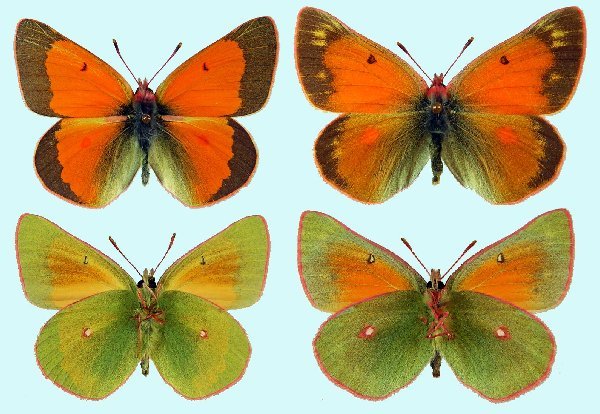Colias meadi meadi

Photo Life History: Colias meadi meadi
Habitat: Arctic Alpine
Host Plants: Astragalus alpinus
Suitable Lab Host Plants: Astragalus cicer
Caring for Live Female Butterflies: Feed females regularly
Methods of Female Oviposition: Portable Cages; Open Screen Cages
How to Find Eggs:
How to Hatch Eggs: Separate eggs individually; Keep egg on original leaf
How to Find Caterpillars in the Field:
Caterpillar setups: Open terrariums; (Specifically this slide.)
Larva to Pupa: Last instar larva constructs a cremaster and girdle.
How to Find Pupae in the Field:
Number of Broods per Year: 1
Overwintering Stage: Third Instar Larva
Overwintering Strategies: Alpine Overwintering Technique
Post-Hibernation Strategies: Provide larvae with fresh host plant.
Avoiding Diapause Techniques: Expose larvae to 24 hours of light
Disease Prevention: Change out host plant and remove frass every three to four days.
Emergence: Emergence Container
Field Notes: Nicky Davis reared a batch of C. meadi meadi larvae in 2007 where larvae were provided healthy host plant as well as 24 hours of light.. Most larvae diapaused at third instar; but some fed through to pupa and emerged as adult soon thereafter. Jacque Wolfe reared Colias meadi lemhiensis where some larvae went through to adult by being exposed to 24 hours of light. Jacque Wolfe and Jack Harry also recorded these notes from 2008.
"For large numbers of immatures of all Colias, it is best to get ova from females. The larvae of Colias eurytheme, Colias alexandra, and Colias philodice will not diapause if reared with a 24 hours photoperiod. It is best to use 24 hour photo period for all species of Colias. Constant light accelerates larval development and, with some individuals, or species prevents diapause. Any taxon that might not diapause (that we are aware of) will be mentioned in the species account. Colias are very hard to rear as they are highly prone to disease. The easiest and best way to rear all Colias is to use potted plants.
Colias larvae that always diapause will not leave drying plant in search of fresh food, but will just diapause on the plant. Potted plants stay fresh and the larvae will grow to their maximum diapausing instar. If only cut plant is available the containers must be designed so they can be placed in the sun for a few hours a day and then put in the lighted lab before sundown. Ultraviolet rays greatly reduce the chance of disease. Once a day, carefully remove the sleeve and check the plant for freshness and add water to the water bottle. When the plant freshness starts to decline transfer each larvae to the leaf of a fresh plant."
